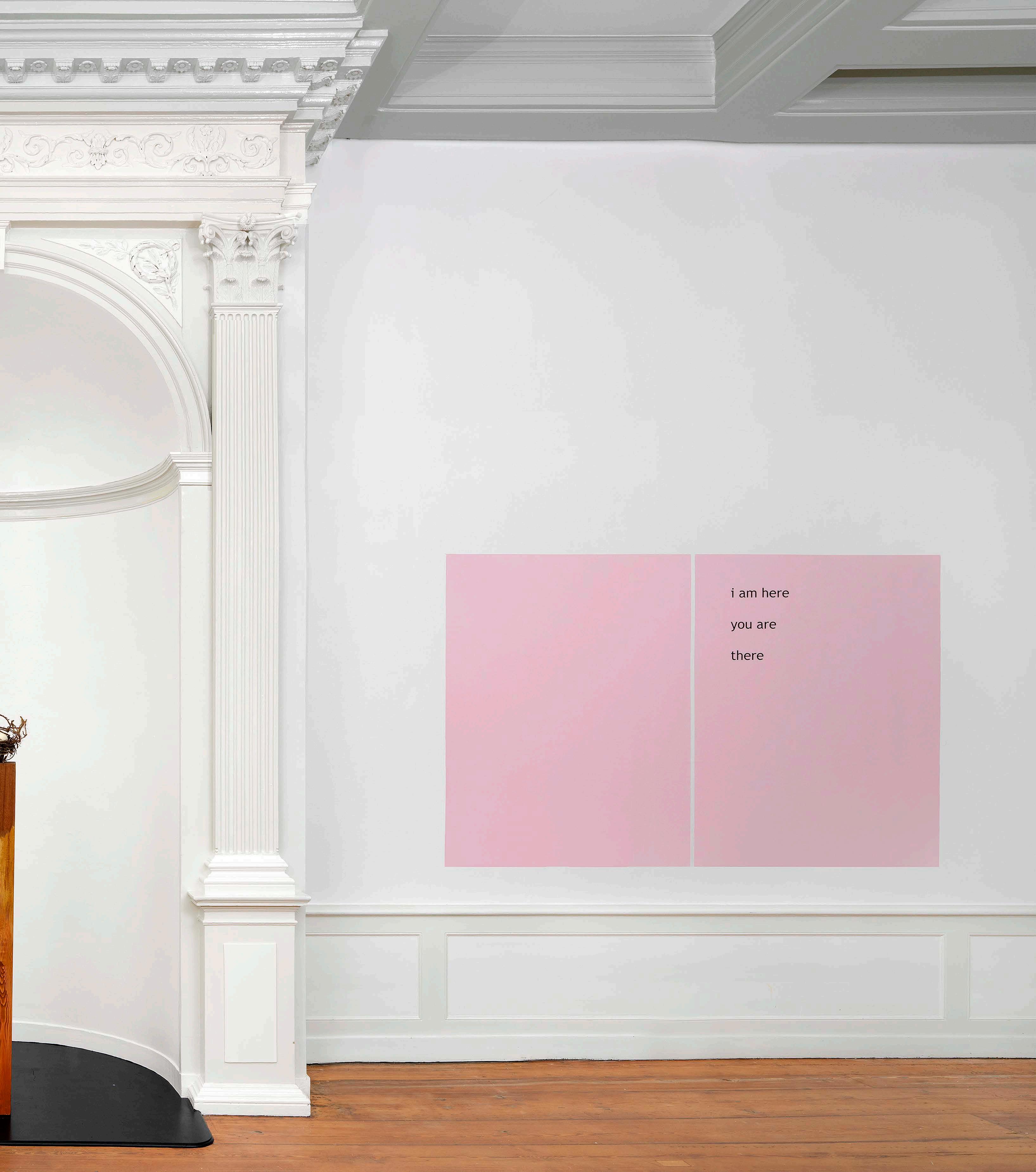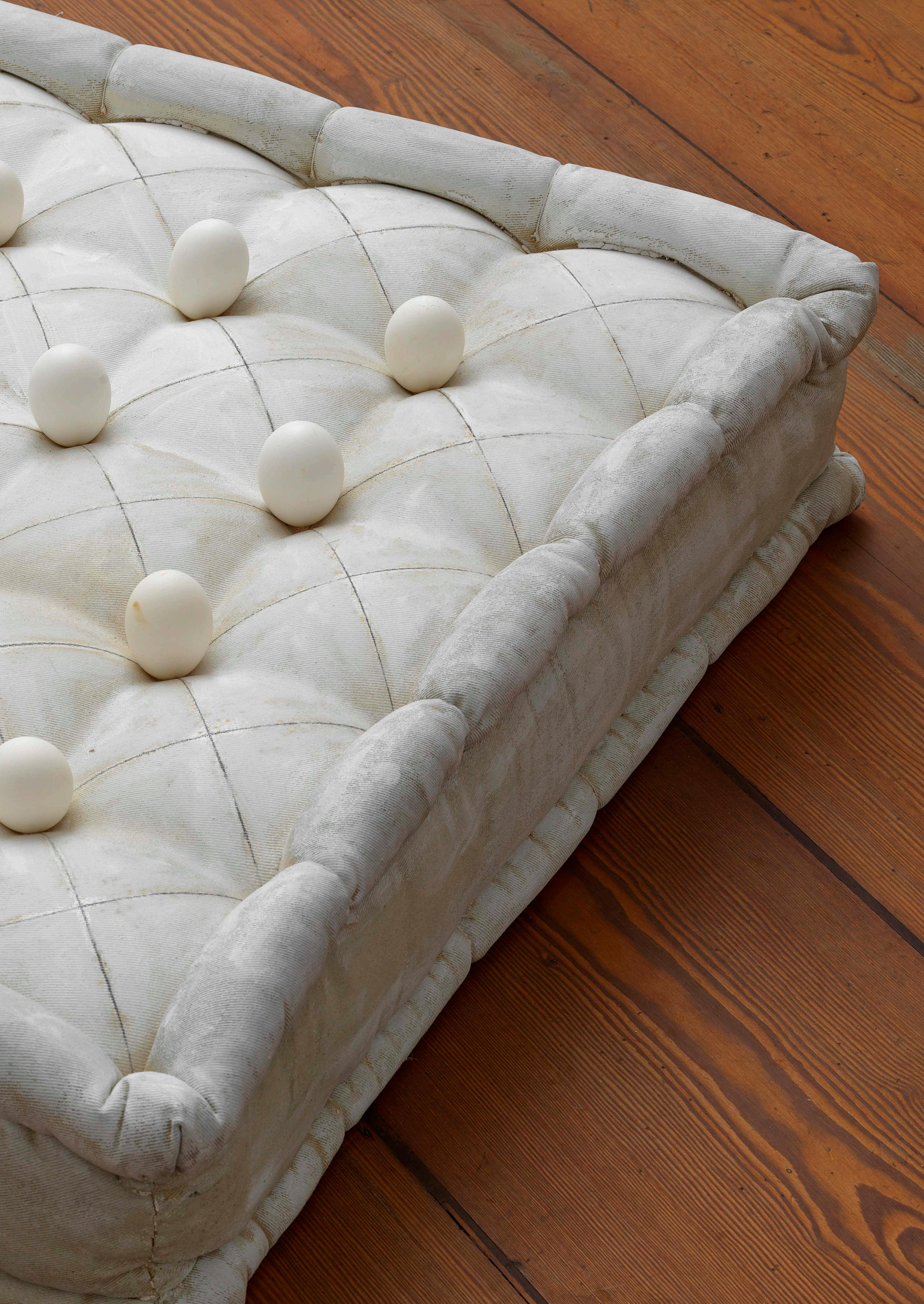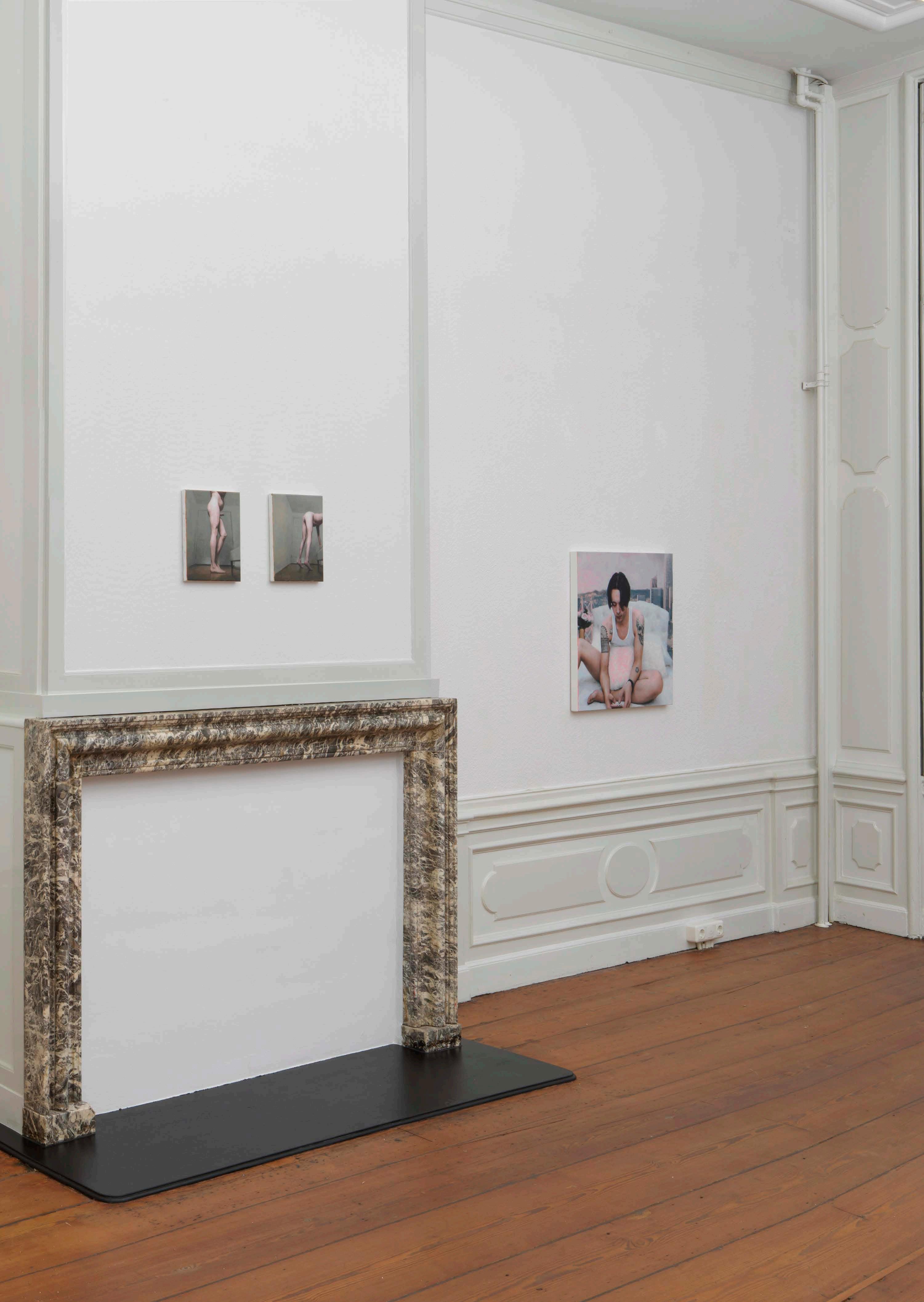




Marc Bijl, Marinus Boezem, Alicia Framis, Sarah Friend, David Haines, Entropy8Zuper! (Auriea Harvey & Michael Samyn), Marijke De Roover, Rafaël Rozendaal
Upstream Gallery is proud to present the group exhibition Alone Together, featuring works by artists exploring themes of intimacy and desire, from the 1970s to the present. Over these five decades, our methods of communication have changed dramatically. Contemporary social relationships - whether romantic, sexual, platonic or familial - are profoundly shaped by the online realm, redefining our understanding of intimacy and the public and private domain. The works in the exhibition express the deep human desire for connection but also reveal the underlying loneliness while breaking taboos and challenging normative notions of love and sexuality.








Rafaël Rozendaal
Rafaël Rozendaal’s artistic practice encompasses animations, websites, NFTs, installations, tapestries, prints, and writing. His work undergoes various transformations, moving from motion to abstraction, virtual to physical space, and websites to print, with each medium informing the others.
Rozendaal’s fascination with Japanese culture drew him to the tradition of Haiku, which he describes as “non-physical artworks.” Initially, these appeared as notes on his smartphone, then evolved into posts and tweets, and finally materialized in the physical world as large wall paintings. Rozendaal’s haiku comment on topics such as the complexities of the digital age and the driving forces of today’s societies, but also on love and longing. Rozendaal sees parallels between haiku and computational processes: each time a haiku is read, it triggers a moment, an algorithm runs, and the three lines of code initiate a process in the reader’s mind.
Rafaël Rozendaal
Haiku 186, 2015 Dimensions variable (5289)
Alicia Framis is a multidisciplinary artist who critiques outdated and unequal societal power structures through various projects, including performance art, design, architecture, and garments. Her work aims to reclaim social spaces for the underprivileged and undervalued in contemporary cultures. She transforms spaces into new, imaginative environments that address human needs, and diversity, and promote freer and more open relationships. Framis challenges traditional gender roles and the standard nuclear family, advocating for a broader spectrum of cohabitation possibilities and creating spaces that allow for emotional and mental freedom.
Framis’ One Night Tent (2002)* is an installation consisting of two outfits that can be transformed

into a tent; a temporary shelter for spontaneous sexual encounters. Framis also provided detailed instructions for using the tent The photographs in the exhibition depict this “reversible architecture for a one-night-stand”. From a transgressive utopia that is subtly yet effectively transformed into reality, Framis constructed these clothing items as a ludic accessory to be turned into a kind of tent that would provide their users with a place to give free rein to their desire. At the same time, the work makes one reflect on how intimate moments are experienced depending on whether they take place in public or private spaces, and how this dichotomy relates to the modern desire for quick, immediate pleasure.
*Framis’ One Night Tent is an installation, conceived in 2002. The photographs in this exhibition were taken in 2019.
Reversible architecture for one night stand:
1 — Find the person who you want to have sex with.
2 — Put the man’s shirt on the floor and close the buttons and zippers, turning it into a perfect square.
3 — Close the buttons and zippers of the woman’s dress and create a dome.
4 — Attach the square floor to the dome with the zipper and buttons.

5 — Take the two sticks from the man’s bag and insert them through the loops in the dome. Secure them on the metal pins at the corners of the square.
6 — Open the entrance zipper and enter the tent. Close the zipper and have sex. In tropical countries you can use the mosquito net.
We wish you a lot of fun with your one night tent. If unfortunately a problem does occur, please contact your distributor.

Edition of 2 plus 1 artist’s proof
Alicia Framis
Couple 1, 2019
Photoprint, framed
87,5 x 109 cm
Edition of 2 plus 1 artist’s proof (#1/2) (6111)



Marc Bijl is a highly versatile artist, who switches as effortlessly between political activity and street culture as he does between the media of image, text and music. His favoured subjects are religion, politics/power, (sub)culture and art, along with science, nationalism, and other manifestations of post-capitalist society. All of this subject matter is simultaneously drawn into a body of work that ultimately revolves around the dichotomies ‘individual/society’ and ‘utopia/dystopia’.
Love is a Battlefield (2020) refers to Pat Benatar’s iconic song, released in 1983 in the US and 1984 in Europe. It is part of a series of works with 80s pop hit titles, executed in spray paint on wooden panels, with which Bijl evokes the dystopian mood of those years and connects it to the present time. The song lyrics are executed in a font referring to the seven-segment display of digital clocks. Future fantasies around the 1980s were defined by the Cold War, the digitalisation of society and global tensions in general. This resulted, for example, in the cyberpunk genre, within which dystopian futures were depicted and technological developments such as artificial intelligence and cyberware coincided with societal collapse, dystopia, and decay. Bijl’s nostalgic retro-futurism projects a future that reigns over the past and must be viewed retrospectively from a contemporary point of view. This year the publication Marc Bijl The Works 1984-2084 will be issued, Marc Bijl’s catalogue for a fictional retrospective in 2084.





Marinus Boezem is one of the leading representatives of the Conceptual Art and Arte Povera movement in the Netherlands. His imaginative works, often executed in everyday materials, have challenged traditional ideas of making art, and blur the lines between art and everyday life.
Boezem’s Letto d’Amore (1986), “the bed of love”, consists of a kapok mattress with a thin layer of white paint applied to it. The buttons of the mattress are connected diagonally with pencil lines, giving rise to a pattern suggesting cross vaulting. In the hollows which are caused by the tufting lie eggs. This intervention calls up an analogy between a bird’s nest and a bed. The resilient mattress has something in the way of the ground plan of a Gothic cathedral. The suggestion of the flight of birds lends a sculptural quality to the rather flat sculpture.
Marinus Boezem
Letto d’amore, 1986
Fabric, acrylic, pencil, eggs
25 x 200 x 100 cm (1514)



The motif of the bird’s nest recurs in the work Albero (1984). On this crosscut beam resides a bird’s nest with a single goose egg. Up through a point about three-quarters of the way from the bottom, the beam is painted with a wood texture. The nest is situated in the place of the crown of a suggested tree. The combination of the painted beam and the eggs refers to the nature/culture opposition. The painted beam represents the metamorphosis from a tree to made object. The egg brings to mind the flight of birds and as such forms an important sculptural element of the work. Also, In iconography, the goose egg signifies the primaeval egg out of which all life sprang. Both the bed and the nest are used as sculptural elements by Boezem. Both can be seen as intimate places, where love is consummated and new life is born.

190 x 15 x 15 cm
The invitation to make love on February 11th, 1978, at 22:00 (1978), printed in black ink and signed by Boezem, was sent to about 350 people in the Netherlands and abroad, working in various fields in the art world. The names of all addressees appear in a text block on the invitation. The time frame for this global action, which should be considered a sculpture, was carefully determined by Boezem and authorised by his signature. The addressees include Richard Serra, Queen Beatrix, Gilbert and George, Edward Kienholz and Daniel Spoerri. The call to communal action forms a collective performance of intimacy.
Marinus Boezem
Sculpture I Invite You To Make Love On February 11th 1978 At 22.00 Hours, 1978 paper, ink, pencil
29,7 x 21 cm
Edition (4310)

(Auriea Harvey & Michael Samyn)
Artists Auriea Harvey and Michaël Samyn met online in 1999 and have been romantic and creative partners ever since. Their digital romance began when they met on hell.com (a “private parallel web”). After this, they began exchanging interactive web pages as online love letters to traverse the physical distance (Harvey lived in the US and Samyn in Belgium at the time). These pages act “as a desperate plea for closeness through the wires in lieu of skin-to-skin contact.”
As their relationship grew, Harvey merged her web practice, Entropy8, with Samyn’s Zuper! to create the collaborative entity Entropy8Zuper!. As a collective, they undertook public displays of affection, radical for their exhibitionism, yet heightened by mystery. Their work imbued the machine realm of code and terminals with intimate poetry and is a complex portrait of an artistic and romantic relationship that shows that online intimacy is as deeply felt, embodied, and full of risk and reward as any other form.
On view here is Whispering Windows (1999), where the lovers share sultry words on crunchy, low-bandwidth webcams. The audience is invited here to attend the intimate exchange. This work is also currently on view at the Museum of the Moving Image, New York, as part of Auriea Harvey’s solo exhibition My Veins Are the Wires, My Body Is Your Keyboard. Rhizome, an organization that preserves digital art, has restored a handful of Entropy8Zuper! projects for this exhibition, and thanks to them also on view here at Upstream Gallery, using Rhizome’s emulated environment.



Recorded performance in Dimensions (6110)

Harvey & Michaël Samyn)



David Haines
David Haines’ work exists at the intersection between the traditional and contemporary (technical) image. Working with a variety of media - from painting and drawing through to music; ceramics and moving image, the work addresses ideas around what it means to make and look at images in our digitally drenched society. Haines works from out of the premise that technique is a language, that the image is both an anthropological and sociological object and that the experience of looking (at art) is essentially spatial, formed out of a symbiotic relationship between material and image.
Two Boys Kissing, 2015 Graphite on paper
15 x 12 cm (drawing)
35 x 36,5 cm (framed) (3197)




David Haines
Haines’s series of portraits of men reading messages, constructed from images of various online ‘emotional labourers,’ seeks to position itself within the history of painting, particularly in the context of intimate domestic spaces. However, these are not traditional portraits aiming for a particular likeness and the spaces depicted are not home environments but simulationsthe chat rooms inhabited by workers engaged in intimate transactions. These workers exist in some version of the present, the reality of which remains questionable. They are digitised bodies, whose intimacies are transacted on a global stage, speaking of avatars and virtual identities. Voyeuristically, we’ve entered into their private domain. In his video work ‘Boy Sleeping’ (2017) we are taken directly into this space. Here one such labourer has fallen endlessly asleep, underscoring the strenuous effort required to earn meagre income online, all while being unaware that this deeply personal moment is visible to a wide, anonymous public.
Video
11:37 min
Edition of 5 plus 1 artist’s proof (#1/5)


The fact that we have now lived with the internet for more than a quarter of a century challenges the perception of it as perpetually new and hypercontemporary. This reality is discussed in two small paintings of a man, naked in a bedroom, taken from the artist’s archive. The source photographs for these paintings - tiny; low resolution, dating from around 2002 - can be seen today as historical documents that testify to our initial uses of the internet to expose our private lives on line. Haines seeks to explore this historical nature through these small ’classical’ paintings, drawing parallels between online spaces and the traditional life drawing class.





Marijke de Roover’s work explores the performativity of identity and focuses on feminism, queerness, sexuality and desire, aided and abetted by iconography and language culled from the culture of the Internet and entertainment industry. In her artworks, she also deals with questions regarding the nuclear family, feminism/ motherhood, the ethics of reproduction, love and romance under late capitalism. Her practice ultimately undermines institutionalised and heteronormative notions about the latter.
In this series of memes, the artist takes her exploration of self-exposure through confessional autofiction one step further by producing comic diy ‘self-portraits’ copying images circulating in popular culture that display an uncomfortable subtext of cultural standards such as success/ failure, femininity, desire, etc. In this way, she revisits earlier ‘selfie’ work and moves it into a more advanced and florid kind of self-portraiture through which she explores female and queer sexuality within the hetero-patriarchy. De Roover reclaims her body as a political battleground, questioning our relative freedoms in the age of digital capitalism. As in her previous (ongoing) series, the ‘unsuccessful’ (because non-viral, niche) memes deal with ideas of a wide variety of coupling practices (e.g., dating, marriage, and heartbreak) that secure the intersection of several consequential social hierarchies including gender, class, sexual orientation and institutional power.
Marijke De Roover if i don’t talk to a woman at least 10 years older than me once a week i die from lack of mentorship, 2021 c-print mounted on dibond with aluminium subframe
100 x 100
Edition of 1 plus 1 artist’s proof (#1/1) (5508)



Marijke De Roover and just like that...(2), 2021
c-print mounted on dibond with aluminium subframe
100 x 100 cm
Edition of 1 plus 1 artist’s proof (5514)

Marijke De Roover send in the clowns, 2021 c-print mounted on dibond with aluminium subframe 100 x 100 cm
Edition of 1 plus 1 artist’s proof (5512)

Sarah Friend is an artist, technologist, and software developer. She works at the fringes of art, finance, and blockchain technology. For this project, Friend used the generative AI model Stable Diffusion to generate erotic images based on a database of pictures of herself. These images are then put online via social networks that allow interaction with a dedicated audience of fans, who influence future content productions. The work is named Untitled in homage to Andrea Fraser’s seminal 2003 video where Fraser has sex on screen with an art collector who paid $20,000 to participate.
Web 2.0 is driven by publicly sourced content being socially shared, but a coming tsunami of synthetically generated text and images threatens to undermine the social contract of these shared spaces. Erotic and explicit AI-generated images and video combined with digital art markets and the laissez-faire content moderation of the decentralized web threaten further to destabilize consensus reality and public perceptions of trust online. At the same time, erotic content and sex work have been a primary driver of technological innovation and a vital economic lifeline for many, and this market too faces disruption by the enclosure of AI models. Sarah Friends’ experiment with self-sovereignty and the boundaries of identity within the capabilities of these new technologies interrogates both their possibilities and inherent contradictions.
Sarah Friend
Untitled (Censored), 2023
Video and fine-tuned Stable-Diffusion 9 min.
Edition of 1 plus 1 artist’s proof (AP 1/1) (6109)






Kloveniersburgwal 95 1011 KB Amsterdam
t. +31 (0)20 4284284 e. info@upstreamgallery.nl i. @upstreamgallery